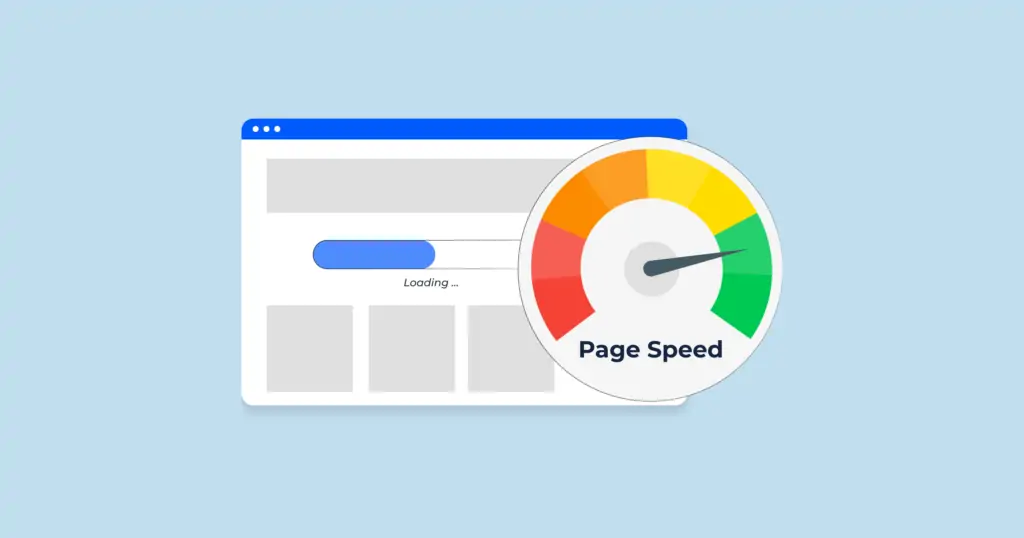Mastering Page Speed Optimization Techniques to Boost Performance
Optimizing a page’s speed is essential for raising search engine rankings and increasing the user experience. For minimizing load times and guaranteeing peak performance, strategies including optimizing images, minifying resources, utilizing browser caching, and utilizing content delivery networks (CDNs) are crucial.
Every second matters in today’s digital world, where attention spans are short and competition is intense. The success of websites is now largely dependent on page speed optimization, which affects the user experience, search engine rankings, and total conversion rates. Web developers and designers may make sure that their websites load quickly and smoothly and give visitors an enhanced browsing experience by employing efficient optimization techniques. Now let’s explore the essential methods for enhancing performance and improving page speed.
Image Optimization:
Since images are frequently the largest elements on a webpage, improper optimization can have a major effect on load times. To reduce file sizes without sacrificing quality, methods including image compression, selecting the right file format (JPEG, PNG, or WebP), and using responsive images are crucial. Lazy loading strategies can also be used to postpone off-screen picture loading, which will speed up page loads initially.
Minification of Resources:
Minification is the process of eliminating extraneous characters from HTML, CSS, and JavaScript files, including whitespace, comments, and useless code. This procedure minimizes the amount of data that needs to be carried over the network, which lowers file sizes and speeds up load times. By automating the minification process, tools like UglifyJS and CSSNano enable developers to easily optimize their codebase without compromising on readability or functionality.

Leveraging Browser Caching:
Through the use of browser caching, web browsers can locally cache static files like CSS, JavaScript, and pictures, eliminating the need to re-download them on subsequent visits. Developers can direct browsers to cache resources for extended periods, thereby improving load times for repeat visitors, by specifying proper cache headers and expiration times. Browser caching can be very helpful for content that changes infrequently, including stylesheet files and logos.
Employing Content Delivery Networks (CDNs):
Content Delivery Networks (CDNs) are systems that disseminate material from websites among a group of servers situated in various geographical locations. CDNs speed up load times and lower latency by delivering content from servers closer to the user, especially for international audiences. Well-known CDNs with powerful caching and optimization capabilities, such as Cloudflare, Amazon CloudFront, and Akamai, are vital resources for improving website speed.
Optimizing Server Response Time:
The term “server response time,” which is also referred to as “Time to First Byte” (TTFB), describes how long it takes a web server to react to a browser request. Mitigating network latency, streamlining database queries, and putting effective caching systems in place are all necessary for improving server response time. Enhancing database indexes, utilizing server-side caching solutions, and utilizing content management systems (CMS) with integrated caching are some strategies that can help increase TTFB and overall server speed.

Prioritizing Above-the-Fold Content:
The area of a webpage that viewers can see without having to scroll down is referred to as above-the-fold content. You may increase perceived load times and user engagement by giving important above-the-fold content—like headlines, navigation menus, and main images—priority loading. Initial page rendering times, or page speed, can be further optimized by employing strategies like delaying the loading of below-the-fold content and asynchronously loading non-critical resources.
Implementing Progressive Web App (PWA) Technologies:
Utilizing cutting-edge web technologies, Progressive Web Apps (PWAs) provide app-like experiences on a variety of platforms and devices. PWAs give priority to performance optimization strategies like caching, service workers, and responsive design to guarantee dependable and quick performance—even on sluggish or unstable networks. Developers may create native-feeling online experiences with instantaneous loading times and flawless user interactions by utilizing PWA technology.
In today’s digital world, page speed and performance optimization is crucial to providing quick, responsive, and interesting online experiences. Developers may greatly increase user satisfaction and load speeds by putting strategies like resource minification, browser caching, image optimization, and CDN integration into practice. Setting performance optimization as a top priority helps users browse more smoothly and increases search engine rankings and conversion rates. Websites can stand out in a crowded digital marketplace by focusing on speed and efficiency and drawing and keeping consumers with lightning-fast performance.


